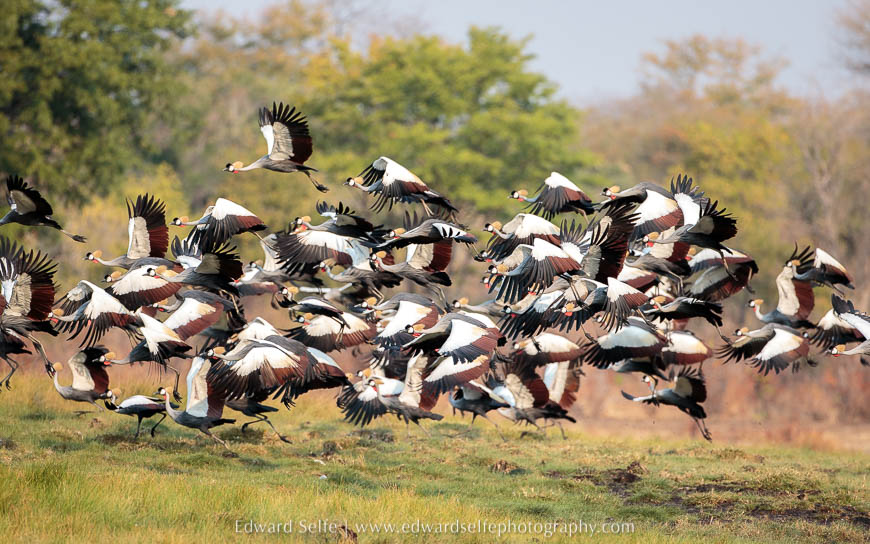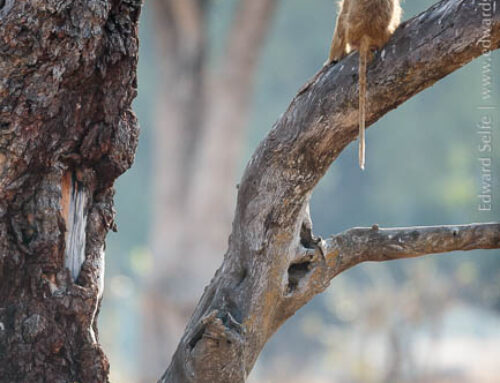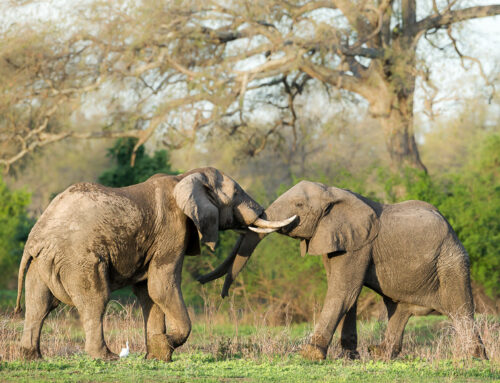Crowned Cranes are elegant, unmistakable birds, standing over a metre tall and topped with a golden crown of plume-like feathers. They carry bright red wattles below the chin which contrast sharply with their grey, white and chestnut plumage. They are long-legged, with large splayed feet allowing them to walk briskly through damp marshland areas where they forage for food.
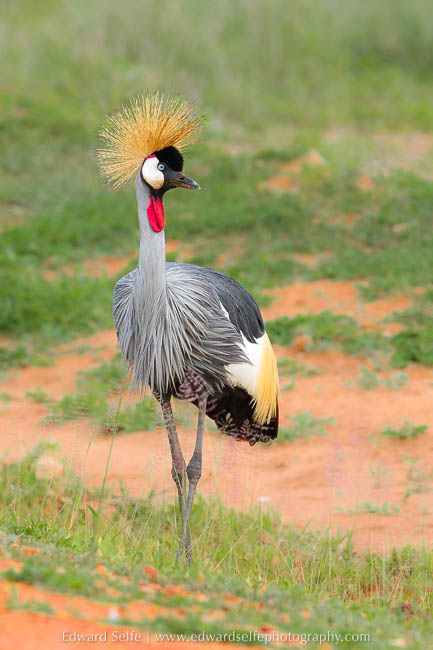
As with all cranes, these birds are shy and rarely confident around people. They maintain a safe distance, preferring to start moving off long before you reach them, avoiding the need to run or fly at the last moment. However, when we do get close, we find a bird of delicate beauty; tightly feathered heads give the impression of being carved from porcelain, and impeccable preening keeps their long tail feathers in perfect order.
Southern Crowned Cranes are predominantly grey, showing a gradual change from grey at the head to almost black at the rump and vent. Northern Crowned Cranes are much blacker, appearing sooty and very dark. The two species inhabit the same ecological niche, but are separated geographically. As with other cranes, they feed on a variety of amphibians and invertebrates, reptiles and seeds. They stalk slowly through grasslands hunting small prey, or occasionally stamp their feet to disturb potential food.
They are most often on the ground, though they do fly very strongly when required. They usually roost in trees and descend early in the morning to start feeding; it is common to find pairs foraging at dawn, long before sunrise. Pairs are the most common social unit, since they form a long-term pair bond through their lives.
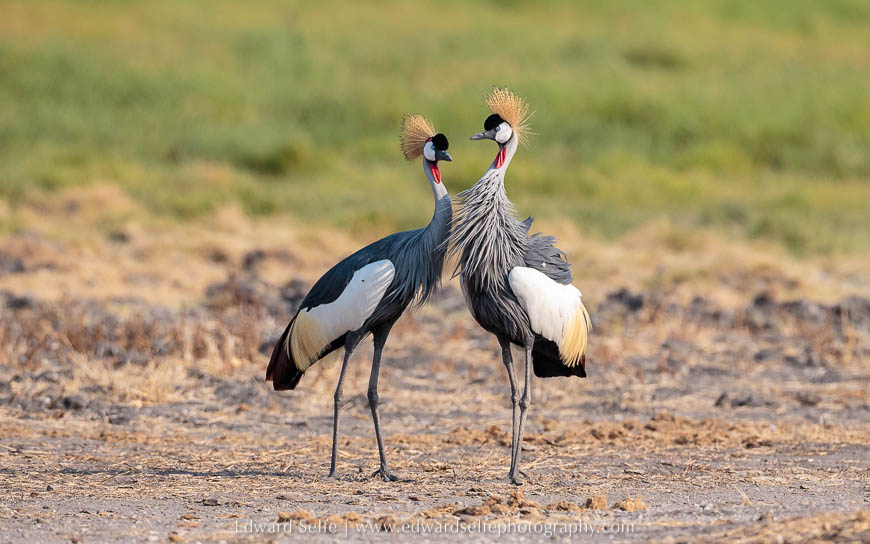
Courtship time draws large numbers of cranes from a wide area to repeatedly used sites. In the South Luangwa, these are most often at natural salt pans, and it’s not uncommon to see hundreds of cranes together, performing ritual courtship dances and emitting an unusual booming call. Once pair-bonds have been re-affirmed, and new bonds forged, the pairs disperse to breed at the start of the rains.
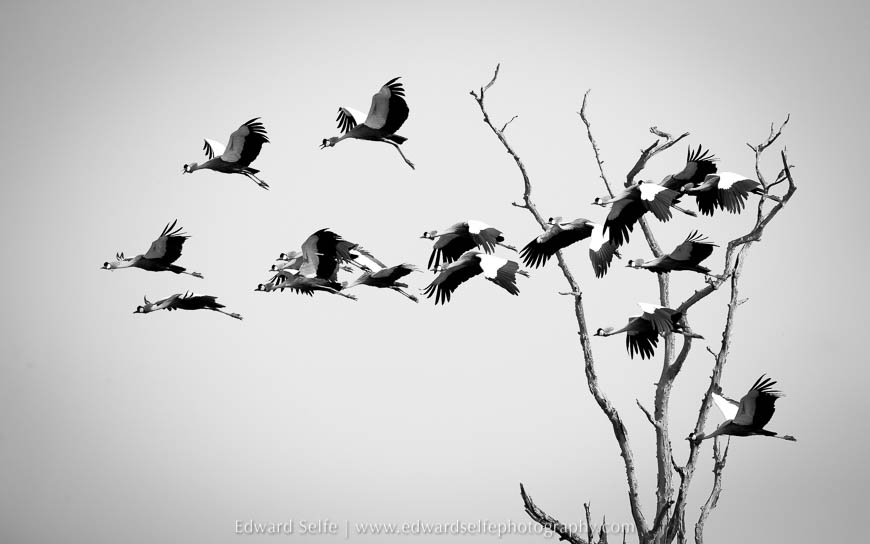
Nesting takes place in flooded grassland; the pair fold grass and reeds to make a raised pad that is screened on all sides by vegetation. Here they lay 2-3 eggs and incubate for around 3 weeks. The chicks are entirely dependent on their parents for the first 4 months until they fledge. Even after that, they will stay with the parents until around 10 months. At this stage, the adults are even more secretive than normal, but the families can occasionally be seen in moist grassland, stamping their feet to dislodge small prey for the chicks to catch.
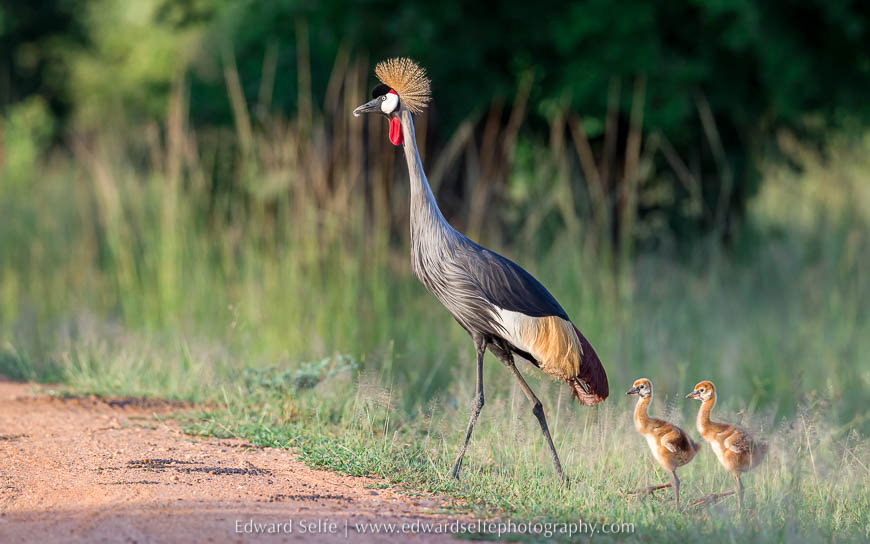
As they grow up, the chicks begin to obtain their adult plumage. They develop the adult body shape before they grow all the feathers so there is an interim stage where they look quite unusual! When the immature plumage has grown, they closely resemble their parents, but without the rich red wattle and the striking golden crown.
Known as Crested Cranes in some areas, these are one of the world’s most striking birds, among a family that has several members who might make that claim. Cranes are an intelligent bird that sit high up the biodiversity ladder; it’s known that Cranes will be one of the earliest species to die out when conditions become less favourable through human or natural effects. Luangwa’s Cranes are particularly vulnerable to plans for a dam across the Luangwa River which will destroy large parts of their vital feeding and breeding areas.
